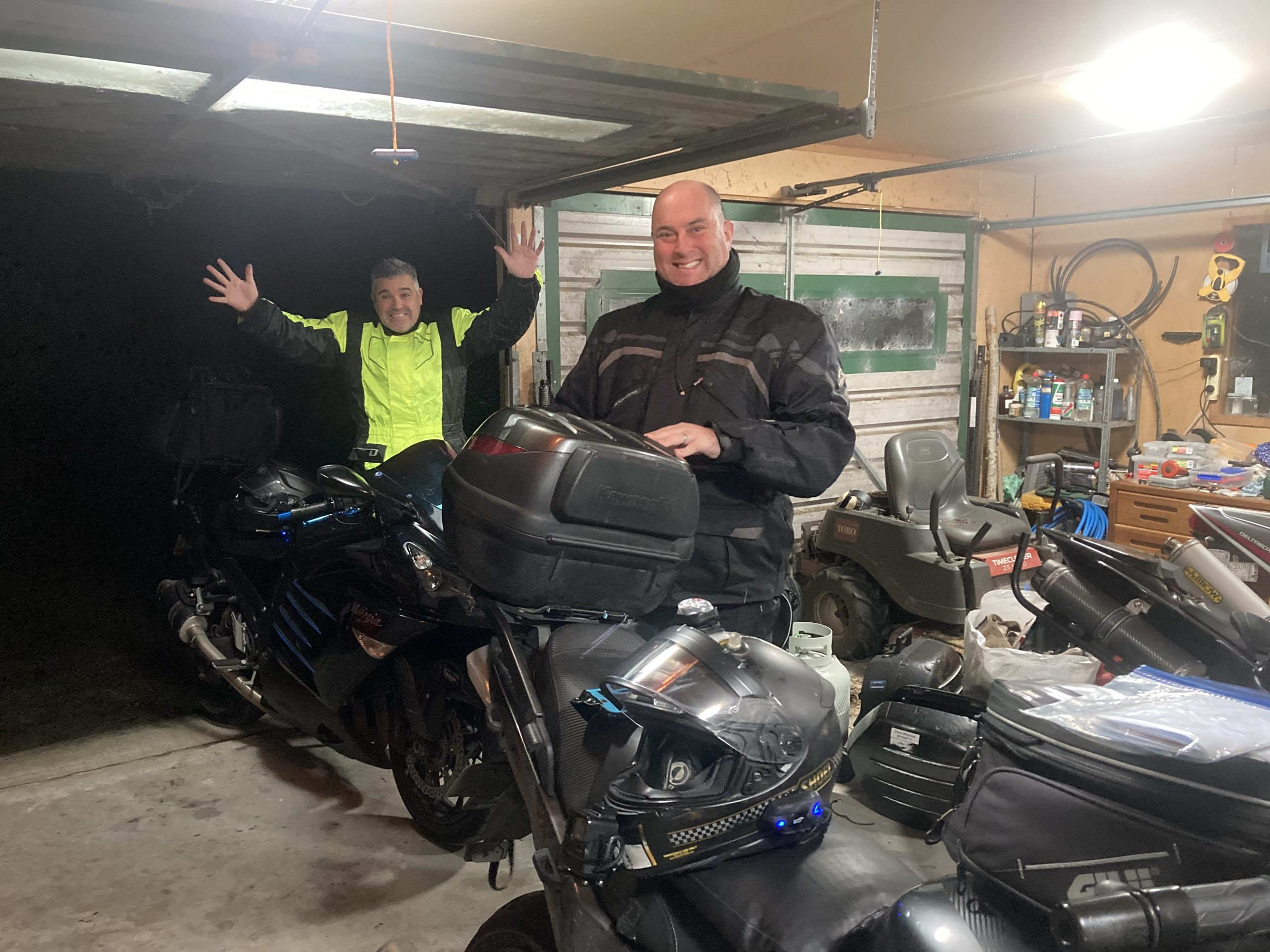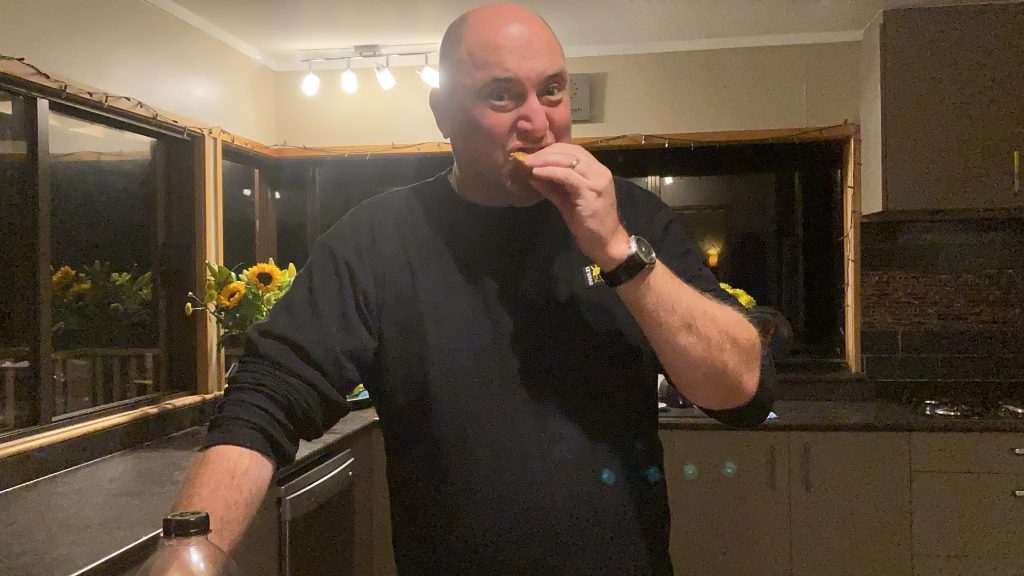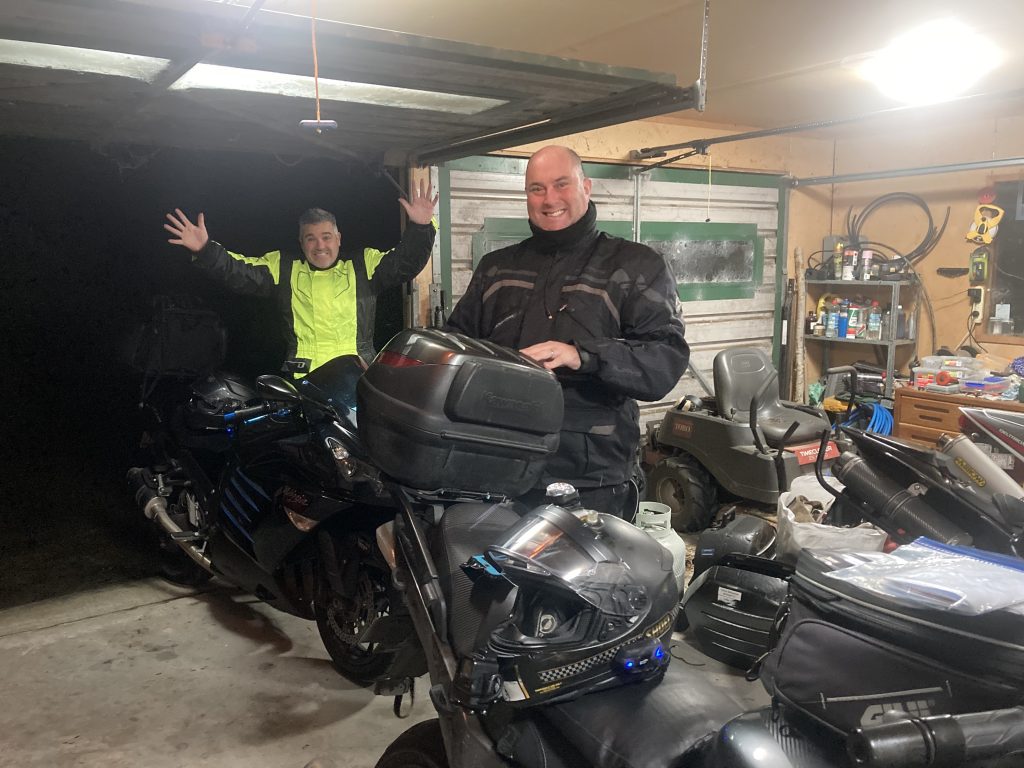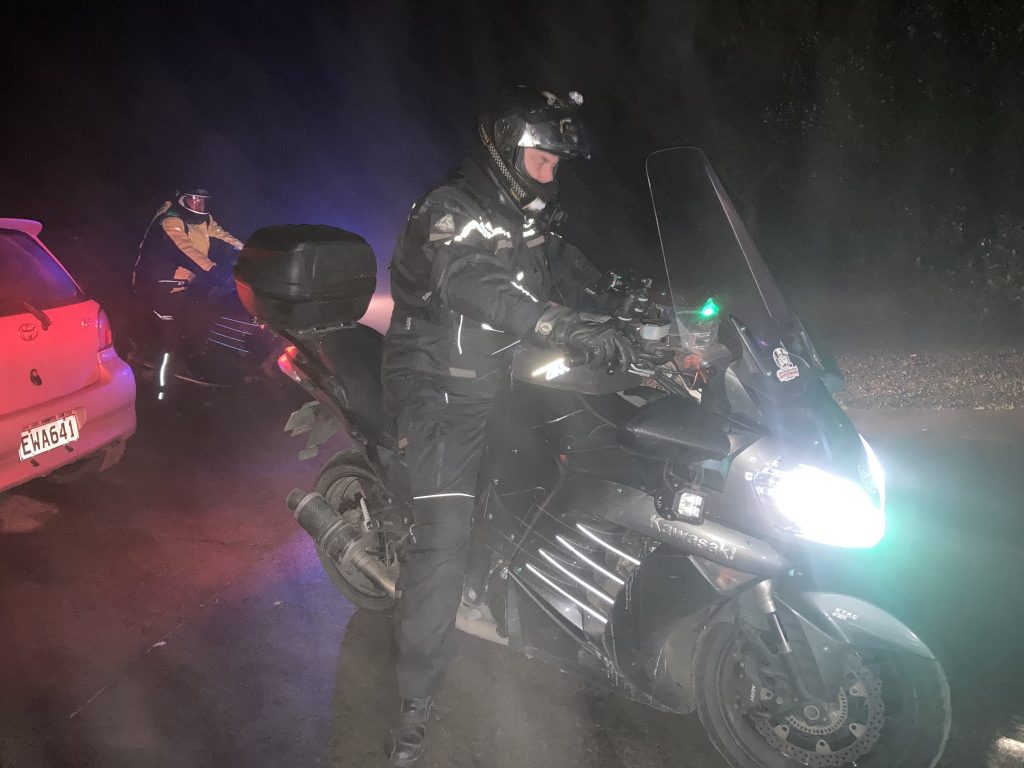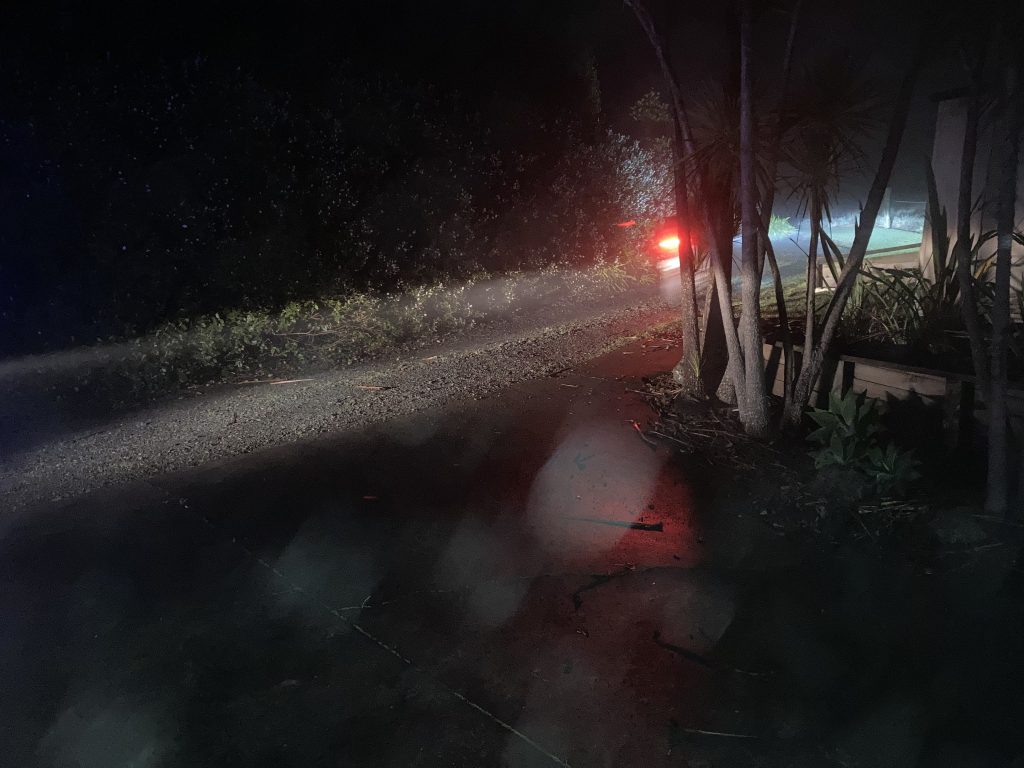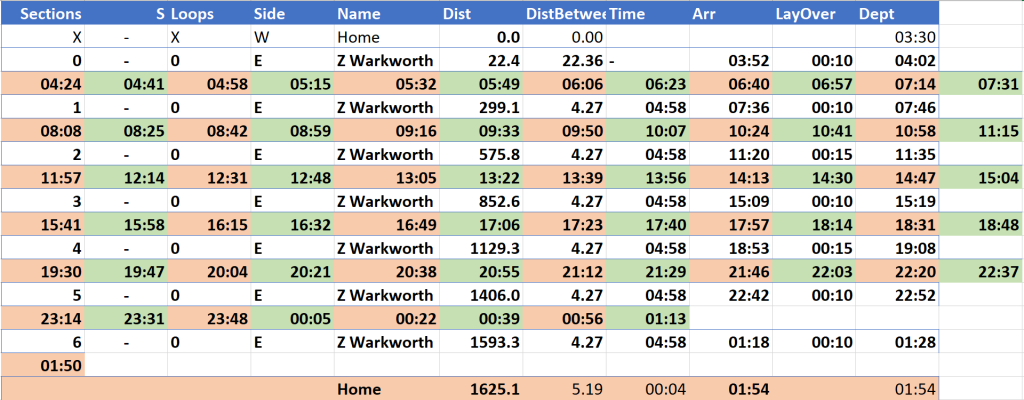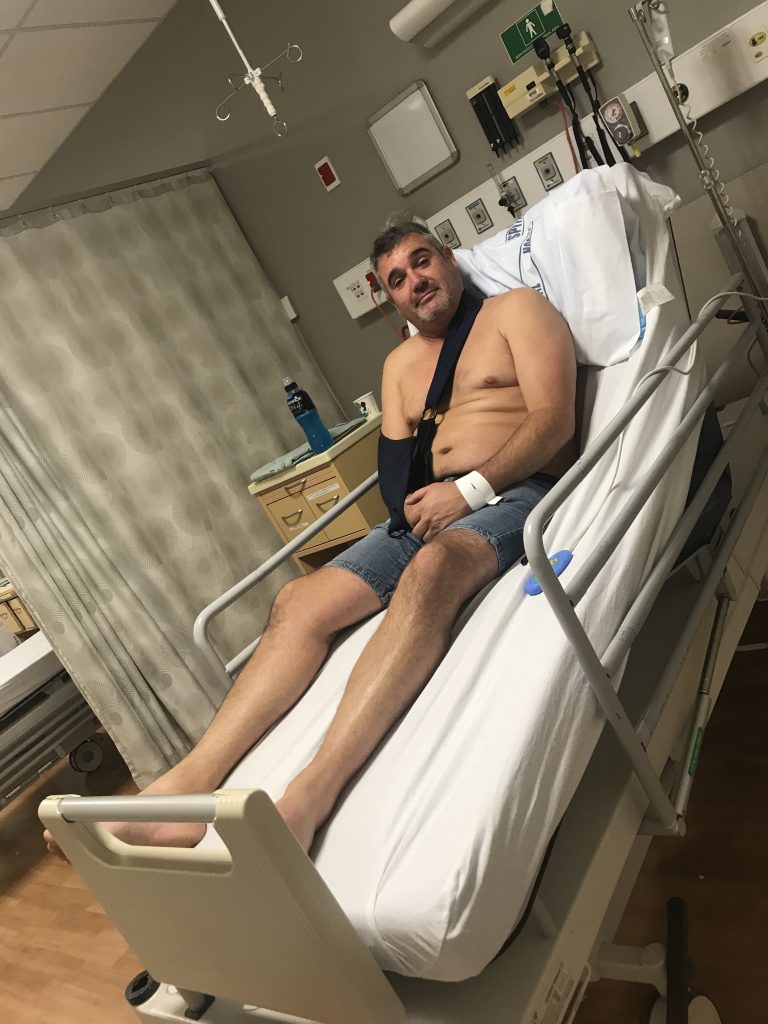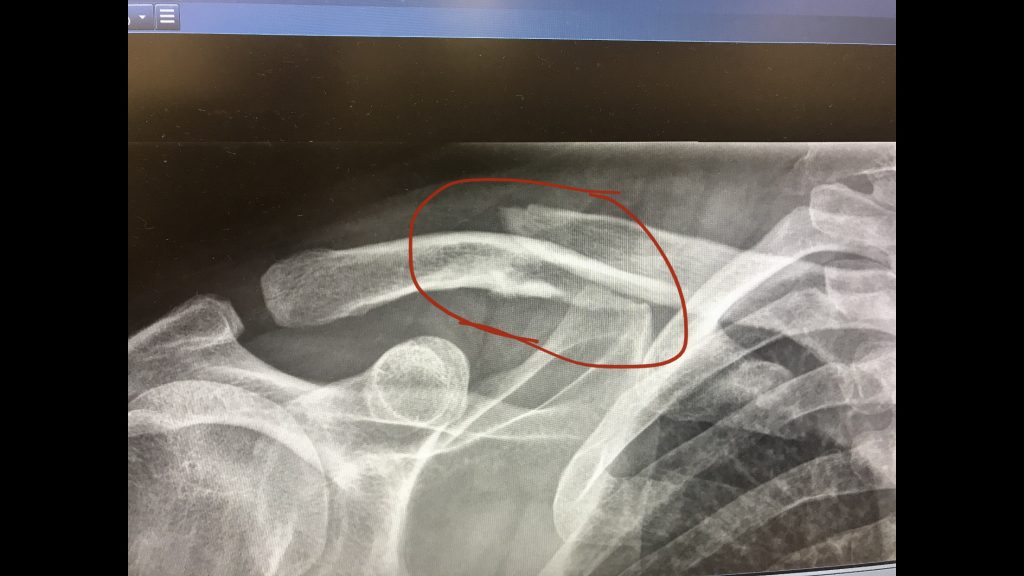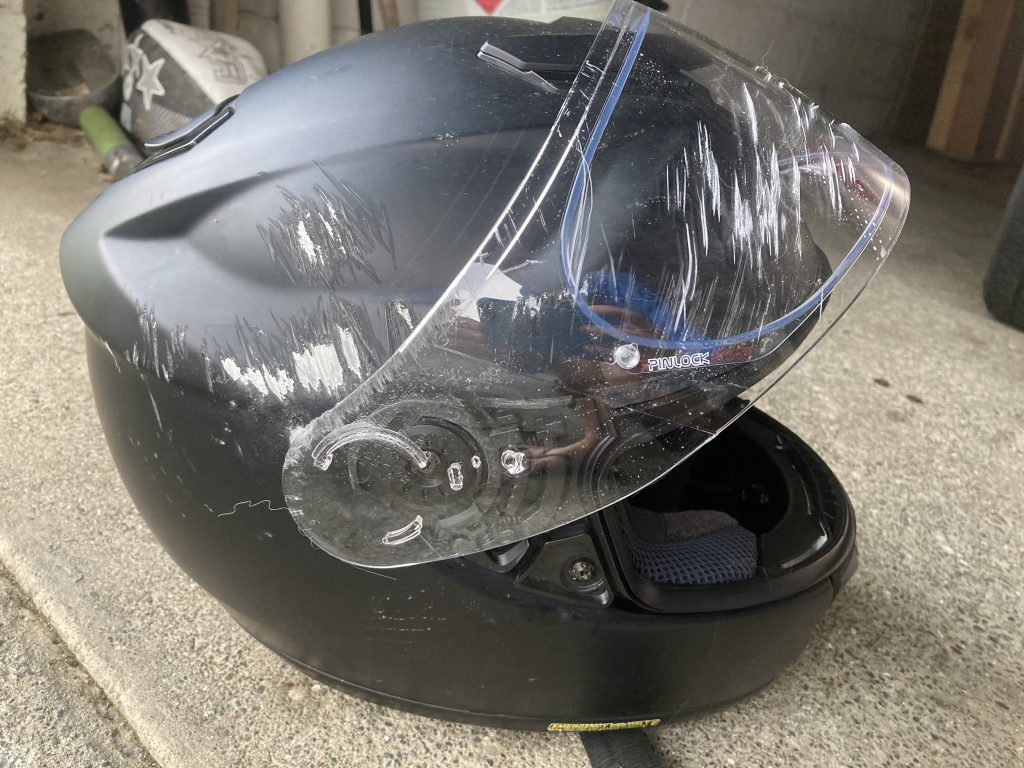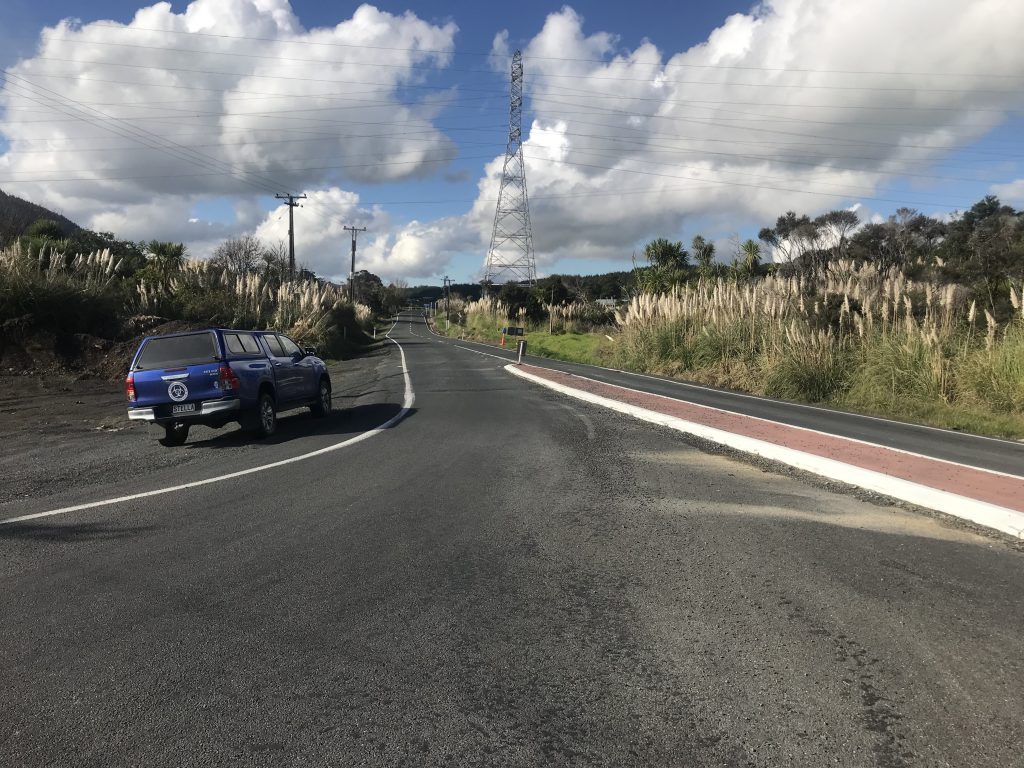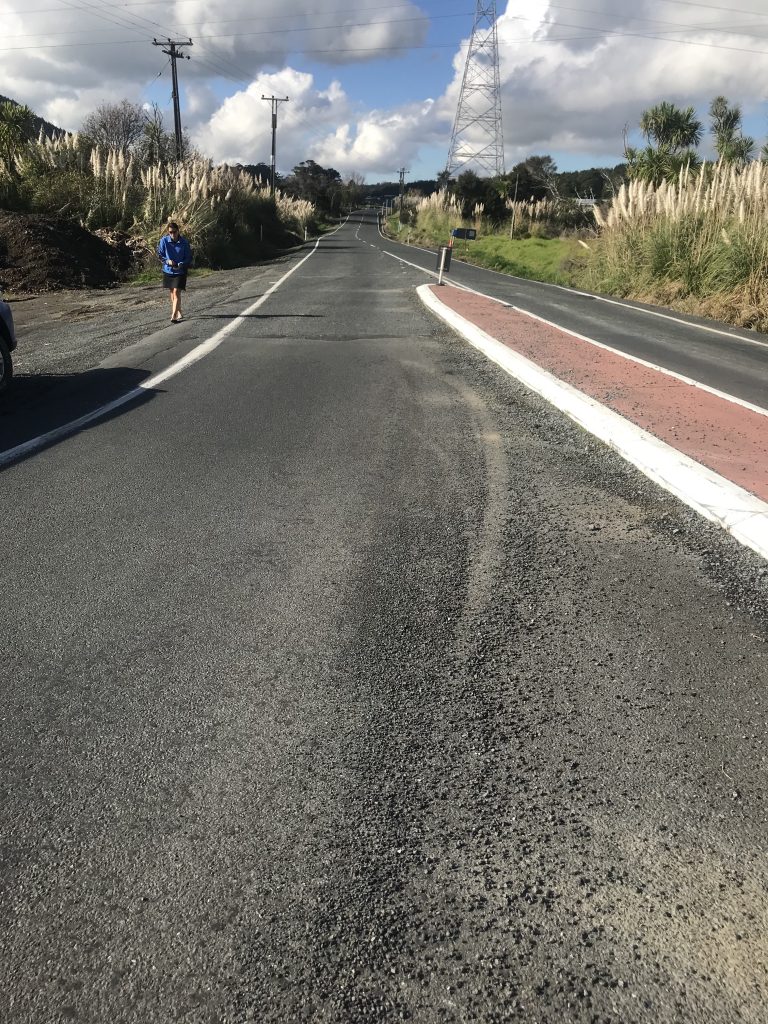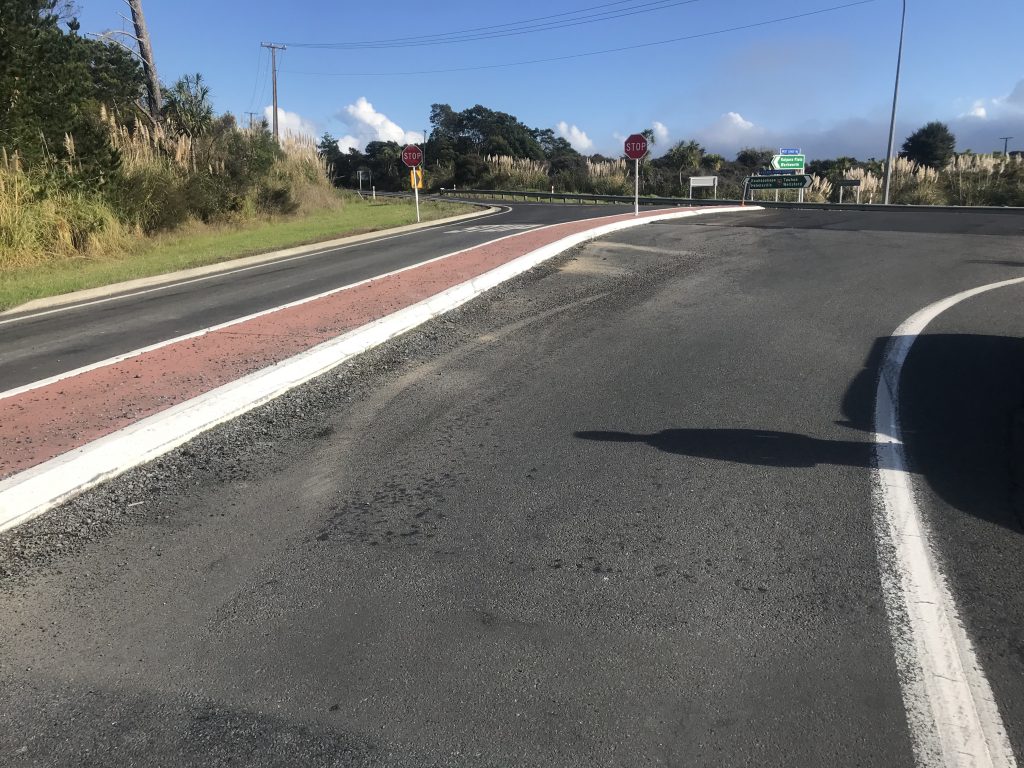Our fundraising ride for Aran Animal Rescue
Luke and I had set out to complete a planned, 1600km ride in 24hours as a fund-raiser for Aran Animal Rescue. This would have been the 10th of these rides which I would have completed, and Luke’s 3rd. We’d like to start this by thanking everyone who donated to the Give-A-Little fundraising page. The total amount raised by the time we headed out on this ride was NZ$1,269. We are so super thankful of everyone who got behind us for this, and we want to let you all know that we gave this a really good go. We tried super hard with the detailed planning, the preparation and also the execution of the ride itself. Unfortunately, as you will see below, we were unable to complete the ride, it came to a rather abrupt end, only 95km into it.
We need to stop now, and re-group. We do intend to give this another go a little later on this year, but it will have to wait until late Spring / Early Summer before we’ll be in a position to try this again. We hope that the account of our efforts below goes some way to show that we really did make a sincere effort to complete this ride and that we didn’t simply, just give-up. We had to stop, we had no choice. – Thank you for your understanding.
Saturday 30th May, 2020
It was an early start with our planned 03:30am departure from home. This ride was unusual, in that we were tracking ride-distance from the gate at home and not from the first fuel stop. It was also unusual in terms of the route which we had planned (far more details here), 70 legs of a 22.3km stretch of local road, essentially forming ’35 laps’ of a ‘there and back’ route, spanning between SH16 on the western side, and Woodcocks Rd on the eastern side. Every sixth lap, we’d need to stop to re-fuel, and so there was an extended trip out to the Z station, adding an additional ~4km each way on those laps.
I’ve been a little uncomfortable calling each loop, a ‘lap’ as it gives the wrong impression of this ride. It was never, ever a ‘race’ or a ‘speed trial’ etc. On the contrary, we knew this was going to be a challenging ride, not only because of the twisty nature of these local roads, but also because of some of the other, known hazards: rain, possible morning fog, damp roads, increased hours of darkness at this time of year, plenty of blind corners, rural roads, with rural traffic on them, somewhat under-maintained roading surfaces with a good number of slumped sections, 6 single-lane bridges on each and every leg and the normal types of debris which you find on this route, including farming spill-offs into the road etc. We knew all of these going into it, we’d said that we would need to treat the whole thing as a defensive-riding exercise.
And so, that’s how we set out. Our morning routines were going reasonably well, I was a little later than I’d hoped getting my toast down, and getting out in to the garage, as a result we rolled out of the drive at about 03:36am. 6 minutes late wasn’t the end of the world, since our ride-clock doesn’t start until we’re actually active, but it does mean that all of the planned timing sheets are then ‘out by 6 minutes’… But it really didn’t matter, we were on the road and out there doing it…
This timing sheet showed the main fuel stops on the white-background rows, the coloured segments show the turning points with the reddish colour being the western turn, and the green colour being the eastern side.
So, heading out from home and turning right on West Coast road to head to Warkworth, we were very aware that we had misty fog to contend with. This first leg was ‘on the clock’, but it was also our chance to perform a ‘sighting run’ and so Luke and I were being observant, talking over the comms in detail about things which we had seen along the way – Cows on the side of the road, loose chip on the road-works just east of our starting point, a couple of freshly dead possums on the opposite side of the road, possibly in the riding-line, dampness almost everywhere, patches of sand in the middle of the road as we entered into Warkworth where it looked like someone had attempted to put it down over, perhaps some spilt oil, and lots and lots of fog.
Despite this, we arrived at our first fuel stop at 03:54am, just 2 minutes behind our originally planned time. We did this stop pretty quickly and were heading out at 03:58am. Because we’d only used 4 minutes at this first stop rather than the planned 10, we actually left 4 minutes earlier than we were due on the timing sheet. Heading west-bound, we made comfortable progress back over to SH16. The dead possums were right in the normal riding-line, so our sighting efforts on the way out had paid off, we’d taken a very wide and cautious line through that point. Having comms really does help when you’re riding with someone else, the amount of information you can share simply, is huge, compared to almost nothing without. Luke popped a reminder of the possums to me over the comms as we neared that corner, I was also able to remind him of various slumps in the road as we went over ‘the hill’ too. We were working hard to find a comfortable rhythm, one which worked with the reduced visibility due to the fog.
On the way back, westward, we noticed that one of our neighbours was grazing his cows behind a make-shift tape on the verge. These were the cows which we’d previously thought were just roaming free on the side of the road. We arrived at SH16 for our first ‘western end turn’ at 04:19am. Wow, we thought, that’s actually a full 5 minutes earlier than planned, even with the fog! Ok, we thought, we might actually be able to do this… We were very pleased that we’d managed to do a leg at our planned rate, even with the reduced visibility.
We pressed on to see how we were when we got to our next turn. Our east-bound leg was feeling good, we’d settled into that rhythm we’d been trying to find. Luke was getting warm in his three layers (on his top), so apologetically he said he’d need to stop at the next turn for a few minutes to remove his excess of clothing. This worked well for me, because I’d also noticed that the timing sheet which I’d inserted into the tank-bag was UPSIDE DOWN! Knowing where we were against our plan was going to be an important consideration throughout the day, so I too needed to stop to sort that out. We’d also had some issues with our SpotTrack going into the initial fuel stop, and that would give me another chance to check that it was all running as it should.
We pulled in at our Eastern turning point at 04:36am, still 5 minutes ahead of the plan. Both of these last two legs were spot-on the allocated times, 17 minutes in each direction. We were thrilled as these legs had been hard with the reduced visibility. At that point we had figured that if we could do the planned times in that weather then we really did stand a good chance of getting the planned ride done. Of course, with the time needed at the stop, we lost some of these 5 minutes, we left that stop after 3mins and 51 seconds, at 04:40am, just one minute before we were due to.
This is why we we’ve said in various posts that we felt like things were going really well for us at this point, that we were settled and happy with how things were going. Our return, west-bound leg went well, without anything untoward happening, as we neared the turning point, I turned on my red-light head-torch to double check what time we were due (04:58am), we arrived there at 04:57am – the same ‘minute ahead’ which we’d left the Eastern turning point. We were clocking these legs in at exactly the anticipated pace!
On the turn, things went badly. As we rounded the turn and started to accelerate away, starting to head back down the straight, Luke hit a patch of loose gravel on the road and lost rear-wheel traction, through his rear sliding, he ended up ‘high-siding’ (which is where the back wheel moves around the bike, then snaps back into traction at a certain point, ejecting the rider). He was thrown off the bike as the bike headed to the left hand side of the carriageway. He was sent into the air and then slid approximately 10 meters or so stopping off the edge of the road, his bike stopped on the road.
It was very dark, the road was very quiet. I heard his expletive through the comms kit as it happened, I saw his light flash past my bike. He was on the right hand side of me when it started, but ended up swinging across the back of my bike (missing me by what must have been only centimetres), and was thrown off to the left. I heard the noise of the bike on the road, and started to brake immediately. Having stopped on the side of the road, I called to him, asking if he was OK. He didn’t respond. I asked again. Still nothing.
I was sure I could heard him breathing heavily through the comms. I told him I was coming, just to hold on, that I was turning around and coming back just as quickly as I could. I asked him again if he was ok. Nothing… Then I started to ask him if he could hear me?… I had turned the bike in the road and was heading back to where he was, but the road-island near the junction stopped me from pulling directly up to him, I had to round the island again. It was so dark I needed my light from my bike in order to be useful for him when I got there. As I neared the turning, or perhaps part way round the turn I heard him starting to respond to me. I hadn’t realised this at the time, but he’d been unconscious for almost exactly 30 seconds.
By the time I managed to park my bike up, he was talking, and was visibly moving, trying to sit up. – This was an excellent thing to see.
I hadn’t realised he’d high-sided, I didn’t see it actually happening as he passed behind my bike. Normally a low-side accident has minimal body impact with the road and I had just thought his silence was him sorting-himself out, or perhaps his comms kit not working fully due to a jolt or something. Because he was moving around and talking to me, at first I thought he was fine. I went over to him to check on him in more detail and he appeared to be in pretty good shape. I noticed his comms kit was hanging off his helmet by the wire; supporting my first thoughts that his silence was nothing more serious. I re-attached his comms unit to his helmet bracket which wasn’t broken.
Immediately, he asked me to pick his bike up (which was partly blocking the road). I figured, if that was his primary focus, then he must be OK. His speech was fine, he was clearly aware of his surroundings, so I started to go to do that. At this point, some passers-by pulled up; they had passed on SH16, heading north, seen my bike’s headlights shining on Luke’s, Luke on the floor and me moving towards him. They had reversed back down the highway and pulled into West Coast Road to help.
As they approached, they asked if we were both OK, and what they could do to help, I said we were both OK, and that I needed a hand to lift Luke’s bike back up. Once it was sorted we turned attention back to Luke, who had started to figure out that he’d broken something. I know from personal experience, that you get a sinking sick-feeling when you break a bone, it’s a pretty distinctive sensation. That coupled with localised pain normally tells you what’s broken. In Luke’s case, he was starting to hold his Right arm’s weight as it was making his collar bone area uncomfortable.
So it was at that very moment, before we’d even checked out his bike, I realised that the ride was over. The two people who helped to stop were pretty happy that we had things in hand after I told them that we were only 5km from home, and that our wives were there and able to come out and help us. I’d mentioned to one of them that if they wanted to have a good sniff of Luke’s breath, that they would be able to tell that we’d not been drinking. – They said they were fine, and didn’t need to do that, but I pointed out that if they were satisfied of that, that it might well help Luke for an insurance claim. They were good enough to volunteer their personal contact details as an on-the-scene witness if required. Then they left.
I went back to Luke to have a more proper chat with him. This is when he said… ‘So, where are we?’ – Wow, that threw me. Until that moment, I didn’t realise that his silence was unconsciousness. I also hadn’t properly inspected his helmet. His helmet had taken a pretty big bash across his visor and his right hand side… Initially, I responded with.. ‘What? Mate, are you serious?…’ – He was.
I explained where we were. He asked ‘what are we doing here? What time is it?’… Well, how do you concisely explain what we were doing. Especially when things like ‘Twisty Butt’ and the plan which I tried to explain simply didn’t make any good sense to him. Yeah, I thought, it probably doesn’t make sense. But mate, yep, that’s what we’re doing, it’s 5am and we’re part way through our ride attempt. – So, what happened? – ‘Mate, I think you just caught a nasty patch of debris on the road and came off’… ‘Where are we?’….
Oh… ok. Hmm. Let’s start over again. This went on a number of times. By the time we got to a count of four, I explained this to Luke, partly in an effort to get him to allow me to start making some decisions for us both, and so that I could start to get him the help he needed. We had two things to consider here and to weigh up, recovery of us, and our bikes, and medical assistance for Luke. First thing, first – since Luke was stable, possibly concussed, but otherwise fine, I decided to call the Ladies and get them to come down and to help to pick Luke up. I did this carefully, I had a plan in terms of how I was going to break the news, and that worked well. They turned up in the truck to collect him and his gear we left at 05:27am to take him home and returned to recover his bike shortly afterwards.
As quickly as we could we loaded him into the car and drove him down to North Shore Hospital. All the time talking to him, and making sure he was ok. His alertness and speech were fine all the way down there, his only discomfort was related to his collar bone.
The staff at North Shore hospital’s Accident and Emergency Dept were, as always, excellent. Luke managed to walk himself in as I parked the car, and self-admitted. When he told them his mode of injury they rushed him into Resus and performed a thorough check over him. He was able to recount to them what happened, how long he’d been out etc etc; they couldn’t believe, given the story what (good) shape he was in. From incident to A&E he was there within 2 hours, which given our remoteness is pretty good. In hindsight once we’d realised that he had knocked himself out, we probably should have called an ambulance; I did offer that to Luke while we were stood road-side, and while we were at home before we left, he politely refused. – Hindsight is a wonderful thing though, and I should have probably insisted that we did.
Each of the decisions we made along the way were based on what we knew at the time, and the complexity of recovering those bikes at that time of the morning, if we didn’t do it then, and ourselves, was going to be significantly harder. I didn’t think at the time that we were compromising seeing to Luke by doing that, but perhaps we were, perhaps we ought to have done that differently…
Luke had X-rays done while he was in A&E, Stella and TK packed up at home and travelled back down to Luke and TK’s house on the North Shore while we were in A&E.
The X-rays showed a decent collar bone break:
He was passing through periods of severe pain, but remained well-natured through the whole ordeal. We were there for a total of around 2.5 hours. He was discharged by 09:30am, the Doctors were happy with his level of alertness, the short duration of unconsciousness, and the rapidly ending period of short-term amnesia. We were able to show them pictures of his helmet when we were there:
He had his waterproof jacket on when he came off and that took a few scratches, but apart from that and his helmet, it is remarkable how few marks are visible on his riding gear. This is another one of those examples when “all the gear, all the time” has saved much more serious injuries. – We’re always very good about this.
When we returned home, we stopped to take some pictures of where he had come off, the debris was like a field of marbles, once he had lost traction on that, there really was no saving it.
Next Steps
- Luke needs time to mend.
- Luke needs some time to sort out his bike through his insurance.
- Winter needs to come and go.
- We have a few events on the calendar which we’ll need to get through.
- We will be back.
- We want to give this planned ride another go.
- We might buy a petrol powered leaf blower and take it upon ourselves to make the roads safe before we start – next time.
How were we hoping to have this ride verified?
This is complex and was worked through in detail with those in the IBA who we expected would be verifying our ride.
The first point I need to make is that we were unable to carry on with this ride after a couple of laps, and so the following has not been put to the test (yet)… But the theory behind this approach might be useful for others who might try to design a similar approach. – It’s important to say that this didn’t set any precedent etc, and it has not resulted in a successful ride verification (since we had to stop…) but – it goes like this…
- I’ve got a well established riding record with the IBA, I’m a known entity to them and so there is a degree of established trust through that history and riding resume.
- I’m also a premier member, and have performed a number of prior rides using electronic submissions, along with SpotWalla tracks etc.
- This detailed ride plan was discussed in detail prior to the attempt, and while that doesn’t amount to a ‘review and pre-approval’, our approach was well understood.
- I’m in the midst of trying to help to quantify and define an approach to ride tracking, in particular, with focus on recording the count of corners in a ride, this has been an ongoing discussion with Mike.
- For (4) to be possible, we need to be capable of creating a high precision GPS based track (well, a number of them), and so… I was tracking the ride not only with SpotWalla, but also with my Garmin GPS, also linked through BlueTooth to my phone, and using GarminLive to obtain a much higher resolution, online shared track via my phone’s data connection. I was also using ReverPro to do the same through their service. In short there are a number of online sources (x3) which were capturing our positional detail in real time, online.
All of this was in order to do the following:
- Use fuel receipts and ODO photos to show the overall (approximate) distance of the ride, and the timeframe of the ride.
- Use SpotWalla (5 minutely logged) points to tie into those fuel receipts, not only the start and finish points, but all 6 of our fill-up stops. This chained corroboration is the whole key point to this…
- Use SpotWalla to also tie into the other various GPS sources, once the general movements have been proven, then, and only then can you check this against the most detailed, locally created GPS track.
- You can use the SpotWalla points and randomly check as many of those as you need to against the locally created GPS track – to check that the GPS track is fully corroborated by the SpotWalla track, and as many sample points from the other online sources as needed to know that the GPS track can be relied up. Once it’s been determined that the GPS track can be fully relied upon, then (unusually, as this is certainly NOT the norm), the GPS track and high detail logged within it, can be trusted and used to prove both overall distance, but – more importantly for our purposes, the corner count across that distance…
It would ALL need to tie in properly with each other element in order for the GPS based content to be trusted, typically GPS data is not a trusted source. It’s only because of the cross-corroboration with a number of other ‘proofs’ that the most detailed source of tracking information can potentially be trusted. These types of rides are considered on a case by case basis. Not all concessions may be available for all potential riders. Some of these may well rely upon an IBA riding history and previously established levels of trust with the riders involved.
